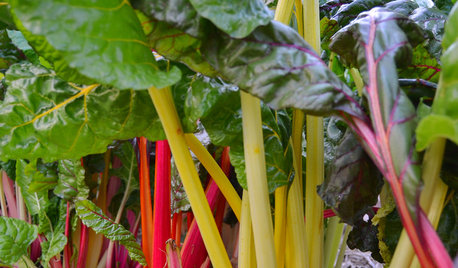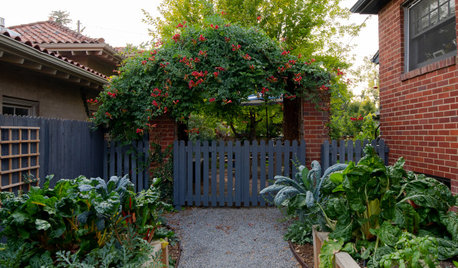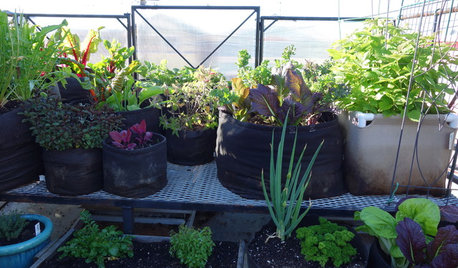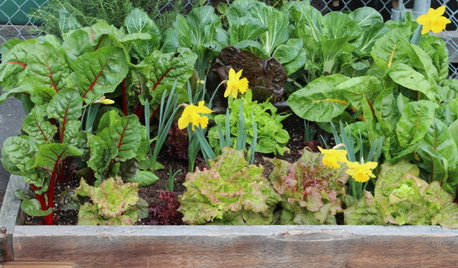Chard ?
leava
11 years ago
Related Stories

GARDENING GUIDESCool-Season Vegetables: How to Grow Chard
A year-round garden favorite with a colorful stem, Swiss chard comes into its own in early spring and in fall
Full Story
FARM YOUR YARDHouzz Call: Home Farmers, Show Us Your Edible Gardens
We want to see where your tomatoes, summer squashes and beautiful berries are growing this summer
Full Story
GARDENING GUIDES12 Edibles Perfect to Plant in Late Summer
Keep those homegrown vegetables and greens coming well into fall
Full Story
FARM YOUR YARDAn Urban Greenhouse Overflows With Edibles
Making meals just means stepping into the yard for a San Francisco couple who revamped an old orchid house
Full Story
FARM YOUR YARDHow to Farm Your Parking Strip
Get an up-close look at a thriving street-side edible garden, one of many sprouting up in Seattle
Full Story
GARDENING GUIDESEssential Watering Tips for Your Edible Garden
To give your edible plants just what they need, check out these guidelines for how, when and how much to water
Full Story
EDIBLE GARDENSSummer Crops: How to Grow Squash
Almost foolproof and with cheerful flowers, squash comes in a wide range of varieties to plant in spring
Full Story
FARM YOUR YARDIf You Have Room for Only One Summer Crop ...
Get an edible that’s long on flavor even if you’re short on space, with a long-time gardener’s favorite picks
Full Story
FARM YOUR YARDGrow a Kitchen Garden in 16 Square Feet
Got a sunny 4-by-4 space? You can make meals more interesting with your own vegetables and herbs
Full Story
GARDENING GUIDES10 Easy Edibles for First-Time Gardeners
Focus on these beginner-friendly vegetables, herbs, beans and salad greens to start a home farm with little fuss
Full StorySponsored
More Discussions







Okiedawn OK Zone 7
seeker1122
Related Professionals
Allentown Landscape Architects & Landscape Designers · Bellflower Landscape Architects & Landscape Designers · Wheeling Landscape Architects & Landscape Designers · Wixom Landscape Architects & Landscape Designers · Roxbury Crossing Landscape Architects & Landscape Designers · Goodyear Landscape Contractors · Holland Landscape Contractors · La Verne Landscape Contractors · Longview Landscape Contractors · Middletown Landscape Contractors · New Braunfels Landscape Contractors · Camp Springs Landscape Contractors · Hampton Bays Decks, Patios & Outdoor Enclosures · Palmetto Decks, Patios & Outdoor Enclosures · Stafford Decks, Patios & Outdoor EnclosuresMacmex
tracydr
Okiedawn OK Zone 7
susanlynne48
mulberryknob
Waurika
Okiedawn OK Zone 7